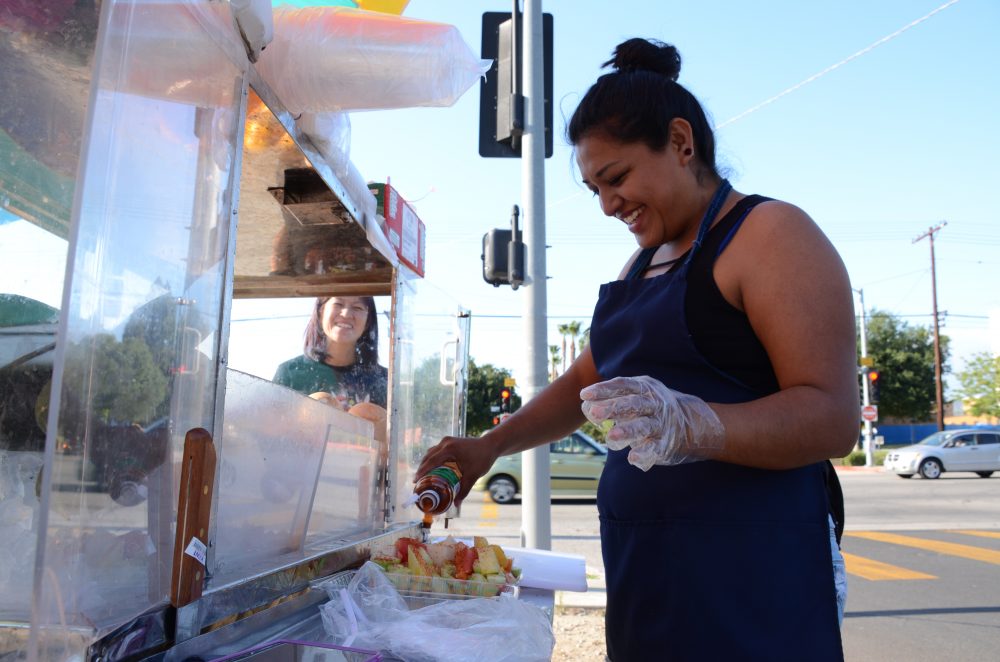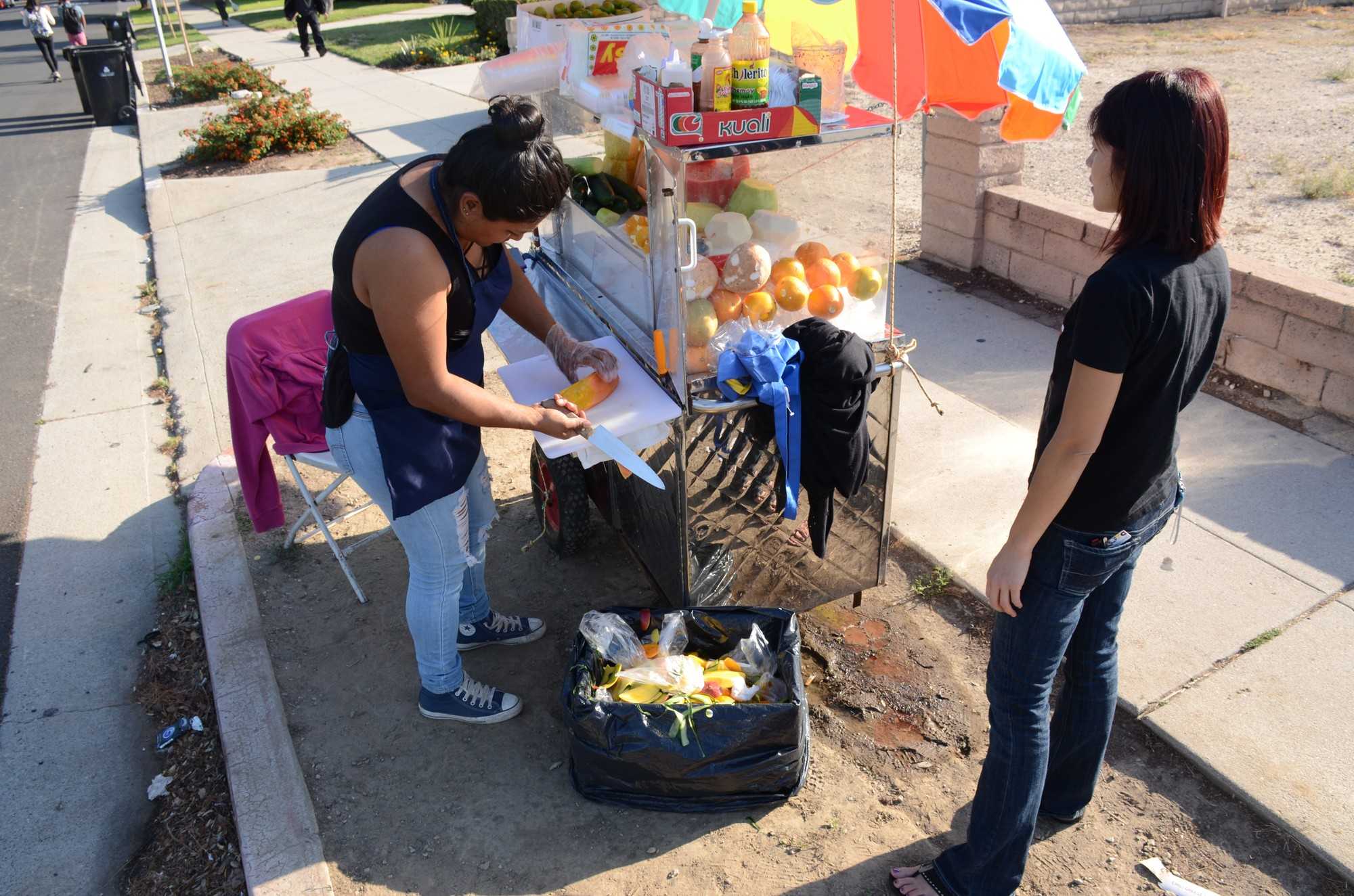She chops off the end of a mango, turns it around and does the same to the other side. She begins to peel it and soon takes a knife and chops it into cubes, before placing it into a plastic container and dressing it with a dash of salt, then uses a couple squirts of lime and chili powder.
It’s just another day and another end to a 10-hour shift for Luz Ocampo.
Ocampo sells fruit on the corner of Nordhoff Street and Etiwanda Avenue, across from CSUN and says she has a steady clientele of CSUN students and professors.
There is a professor that makes her way to Ocampo’s ice-and-fruit-filled cart in order to buy some coconut, a student who goes to buy a tray of assorted fruit almost twice to three times a week, Ocampo says in Spanish.
Ocampo gets to her spot at around 11 a.m. and stays until 6 p.m. Yet, she says her day really starts at 8 a.m. She starts off by washing her cart, picking up and peeling the bigger fruits, like watermelon, before she even goes to her spot near CSUN.
Ocampo, a native of Mexico, recently arrived to the United States in February and has been working as a street vendor since arriving. She says it has taught her how to speak more English, as she practices by learning the names of the fruit she sells and their price.
As Nat Kittisarapong, a community member that lives near Etiwanda Avenue, approaches Ocampo’s cart and asks for a tray of assorted fruit, she asks for the works.
Ocampo obliges.
She dresses the fruit in the staple salt, lime and chili powder, but then adds a few streaks of chamoy, a sauce popular in Mexico made from pickled fruit.
Ocampo asks Kittisarapong in Spanish, “Chile? Sal?” Kittisarapong looks at her a bit confused, but then realizes Ocampo is asking if she wants chili and salt.
Both women laugh as they exchange fruit and money.



















